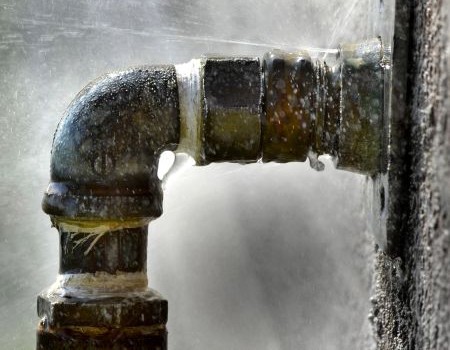When Clay, Cast Iron, or Orangeburg Pipes Become Good Candidates for Pipe Bursting

Homeowners with older sewer lines often face recurring clogs, backups, and unexpected plumbing failures. Many of these issues trace back to aging pipe materials that are long past their lifespan. Understanding how these materials deteriorate helps explain why Greenville trenchless plumbing solutions like pipe bursting are often the most efficient way to restore a home’s sewer system without major excavation.
How Clay Pipes Fail and Why Pipe Bursting Is Ideal
Clay pipes were commonly used for sewer lines throughout the early and mid-1900s. While resistant to corrosion, they are extremely vulnerable to shifting soil, ground movement, and root intrusion. Over time, the joints between clay pipe sections begin to separate, which allows roots to enter and break apart the line. Once roots breach the pipe, they grow quickly inside the system and cause slow drains, foul odors, or sewage backups.
As clay pipes age, they also become brittle. Even minor pressure from heavy soil or nearby construction can crack or collapse the line. These weaknesses make them excellent candidates for trenchless replacement because pipe bursting repairs the entire line in one continuous process. Instead of patching individual breaks, the bursting head shatters the old clay and creates a clear path for a new, seamless HDPE pipe. This updated pipe structure prevents future joint separation and root intrusion, creating a long-lasting and durable sewer solution.
Why Cast Iron Sewer Lines Often Benefit from Pipe Bursting
Cast iron was once valued for its strength and longevity, but it comes with vulnerabilities that become more prominent after decades of use. The inside of cast iron pipes naturally corrodes due to the reaction between wastewater and the metal. As corrosion progresses, the pipe walls thin and develop rough, abrasive surfaces. This creates frequent blockages and weakens the pipe’s structural integrity.
Older cast iron pipes may also develop scale buildup, which significantly reduces flow capacity. Homeowners might notice slow drains, frequent clogs, or gurgling noises long before the line actually fails. Eventually, the deterioration leads to cracks, leaks, or complete collapse.
For these reasons, cast iron systems are strong candidates for pipe bursting. The technique allows the deteriorated metal to be expanded and displaced underground while the new pipe is pulled into place. This avoids the messy demolition that traditional replacement typically requires. The resulting HDPE line is corrosion-proof and smooth inside, which restores full flow and eliminates future rust-related failures.
Why Orangeburg Pipes Almost Always Require Replacement
Orangeburg piping is one of the most problematic materials used in older plumbing systems. Made from wood pulp and tar, it was inexpensive and easy to install but never built for long-term performance. As Orangeburg ages, it begins to deform, bubble, blister, and eventually collapse. Even before that point, the pipe becomes soft and absorbs moisture from the surrounding soil, which accelerates its deterioration.
Many homeowners discover Orangeburg only after severe plumbing problems appear. Because the material is so fragile, spot repairs rarely offer lasting relief. The entire line typically needs to be replaced, and pipe bursting provides a clean, efficient way to remove the failing pipe and replace it with a durable modern alternative.
Trenchless replacement is especially useful for Orangeburg because it limits excavation around foundations, driveways, or landscaped areas. The fragile pipe is broken apart during the bursting process, and the new HDPE pipe provides a stable, long-term solution that eliminates the risks associated with outdated materials.
A Smarter Way to Replace Failing Sewer Lines
Clay, cast iron, and Orangeburg pipes all suffer from predictable age-related failures that make them ideal candidates for pipe bursting repairs. If you’re dealing with aging sewer lines in Greenville and want a long-lasting fix, contact Epoxy Pipe Restorations of the Southeast for expert help with pipe bursting today.